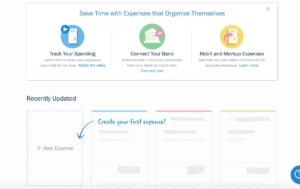How to Handle Inevitable Price Increases
Having to raise the price of products and services has become a huge headache for small businesses as inflation continues to skyrocket – the Consumer Price Index for all Urban Consumers (CPI-U) rose 9.1% in June – and workers continue to demand higher compensation. This has put a squeeze on small business owners, who are now facing the major challenge of figuring out how to continue to raise prices and stay profitable while not driving away customers in the process.
So how do you continue to raise your prices without off-putting your new and existing customers? It’s a dreaded task for sure, but it may not be as bad as you think.
Small Businesses Have The Advantage
Have you gotten notices from large retailers, supermarkets or restaurant chains that they are raising their prices? Probably not. Large companies simply raise their prices and assume customers will pay them because they have no choice. Moody’s analyst Linda Montag said in an interview that large retailers will use stealth tactics to increase prices, such as selling smaller packages of products for the same price as previously larger packages, changing the design of their packaging and offering discounts on products and then implementing a price increase when those discounts have expired.
“Consumer companies across the board have gotten very savvy about how to implement price increases without just slapping on five to 10% price increases,” Montag said in an interview with CNBC.
Larger companies also have teams of consumer researchers monitoring how high prices can be increased before customers refuse to pay so they can determine what their price thresholds are. The point is, if you’re a small business owner, your large competitors are doing the work for you in terms of sales research and price increase strategies – this is something you can definitely use to gain an edge over your larger competitors.
Speak to Customers Personally
As a small business, you have a smaller market share than your larger counterparts, so you can more easily inform your customers of price increases through email, text messaging or a note on your website personally detailing why you need to raise prices. Your customers may not be happy with the price increases, but most of them understand the current economic circumstances the country is facing, and they will appreciate the fact that you’re being honest and upfront with them.
Some of the ways you can soften the blow when you tell your customers of price hikes:
- Keep explaining why. Nobody likes to pay more for goods and services, but most people understand the difficult challenges that businesses are facing right now. Inflation continues to surge, supply chain disruptions remain, and workers are demanding better pay. When you inform your customers of price increases, keep explaining to them the precise reasons why you need to do this. Most customers – especially lifetime customers – will understand, as they are most likely seeing price increases everywhere.
- Send personal messages. If you have the ability to do so, send individual emails or text messages to your existing customers letting them know that you have no choice but to raise products due to the rising costs of commodities, supply chain disruptions, high salaries, etc. Your customer will feel like you are speaking to them directly. There are several online services that can enable you to send these emails or text messages.
- Undercut bigger competitors. The fact that large retailers, restaurant chains and supermarkets are increasing their prices could give you the opportunity to raise the prices of your most popular products, but not raise them as high as your larger competitors. This strategy could boost your sales dramatically if customers believe they can get products more cheaply from you.
- Inform your customers of price increases in advance. Letting your customers know a week or two ahead of your price increases gives them a chance to adjust their budgets and enables them to keep buying from you. Plus, they will appreciate the heads up.
- Make sure to get customer feedback. Make sure you give your customers an opportunity to give feedback on and react to your price increases. Make room on your website for feedback or allow your customers to email you directly, even if they’re just venting about inflation and price hikes.
- Find the Threshold. You need to raise prices to meet payroll and keep the lights on, but

Software such as Freshbooks can assist your business in finding the right price that your customers are willing to pay for your products.
customers will only be willing to pay so much before they walk away. There are tools such as Fresh Books Markup Calculator or Mini Web Tool’s Markup Calculator that can assist you with that.
Get Creative in Product Offerings
If you must raise prices, try offering discounts to make customers feel like they’re getting value. One way to do this is to offer a bundle of products and give them the message that while prices have increased, they’re still saving money by purchasing those products as a group. Restaurants, for example, may go to a pre-fixe menu that will still be profitable and yet cost less than if a customer ordered items from the menu separately. Another simple example is a clothing store might offer a shirt-and-tie bundle when a customer purchases a new suit.
If applicable to your business, you can also offer flexible payment options on prices that are marked up. For example, if you own an electronics store, offer a long-term payment plan for a new laptop. If you’re an accounting or law firm, you may want to offer clients a monthly payment plan.
Don’t Worry, It’s Happening Everywhere
While customers won’t be happy with higher costs, one factor that should put you at ease is that it’s not just you that’s hiking prices – both big and small businesses are doing it as well. Your best bet, and the simplest way forward, is to keep track of the prices your competitors are charging, and stay in touch with your customers.

